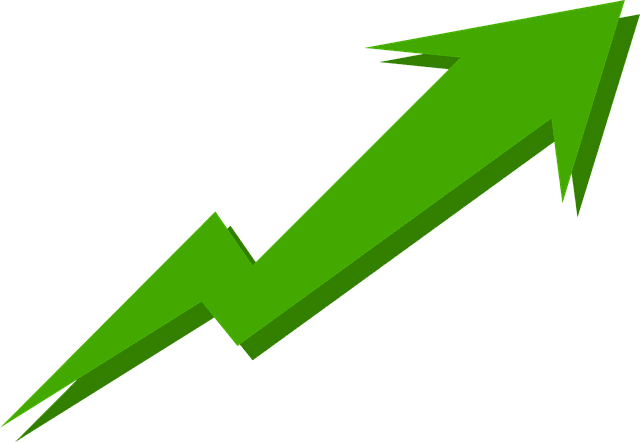The Rise of Automated Trading in 2024: A New Era in Financial Markets
Author: Jameson Richman Expert
Published On: 2024-10-13
Prepared by Jameson Richman and our team of experts with over a decade of experience in cryptocurrency and digital asset analysis. Learn more about us.
As we step into 2024, the financial landscape is witnessing a transformative shift toward automated trading solutions. The demand for speed, accuracy, and data-driven decision-making has propelled automated trading systems into the spotlight, with both retail and institutional investors increasingly relying on them to navigate the complexities of modern markets. In this article, we will explore the key trends, technologies, and implications of automated trading, offering insights into what the future holds.

Understanding Automated Trading
Automated trading, also known as algorithmic trading or black-box trading, refers to the use of computer programs and algorithms to execute trades on behalf of traders. These systems analyze market data, recognize patterns, and make trading decisions at a speed and efficiency that surpasses human capabilities. The growth of high-frequency trading (HFT) has further accentuated this trend, where financial firms use sophisticated algorithms to execute thousands of orders in milliseconds.
How Automated Trading Works
At its core, automated trading hinges on algorithms that are designed based on specific criteria or strategies. Here are the fundamental components of automated trading systems:
- Data Input: Data feeds from various sources, including market prices, volume, and even social media sentiment, feed into the algorithms.
- Algorithm Design: Traders define the rules of the algorithm based on technical indicators, historical price movements, and risk management strategies.
- Execution: Once the algorithm identifies a trading opportunity, it sends buy or sell orders to the market, often with no human intervention.
Key Trends in Automated Trading for 2024
The automated trading space is rapidly evolving, and several trends are shaping its future in 2024.
1. Increased Accessibility for Retail Investors
Historically, automated trading was predominantly the domain of institutional investors due to the high costs and complexity involved. However, emerging technologies and platforms are democratizing access to automated trading. Retail investors can now leverage user-friendly interfaces and cost-efficient solutions, enabling them to implement sophisticated trading strategies.
Advent of User-Friendly Platforms
In 2024, many brokerage firms and fintech companies are launching platforms that simplify algorithm design and implementation. This includes step-by-step guides, template algorithms, and integrated backtesting features, making it easier for novice traders to experiment with automatic trading systems.
2. Advancement of Artificial Intelligence and Machine Learning
Artificial intelligence (AI) and machine learning (ML) are fundamentally transforming automated trading. These technologies enable systems to learn from vast datasets, adapt to changing market conditions, and improve trading strategies over time.
Enhanced Predictive Capabilities
In 2024, AI-driven algorithms are becoming increasingly adept at analyzing complex datasets and predicting future price movements. By incorporating various factors, including geopolitical events and economic indicators, these systems can provide traders with insights that were previously unattainable.
3. Integration with Blockchain Technology
The integration of automated trading with blockchain technology is another trend gaining traction in 2024. Smart contracts and decentralized finance (DeFi) platforms are reshaping the way trades are executed, offering increased transparency and reduced transaction costs.
Efficient Settlement Processes
With the advent of blockchain, automated trading systems can execute and settle trades in real-time, minimizing counterparty risk and enhancing efficiency. This integration is particularly beneficial for high-frequency traders seeking the fastest possible execution.
Risks and Challenges Associated with Automated Trading
Despite its numerous advantages, automated trading is not without risks. In 2024, traders must be vigilant about the potential challenges:
1. Market Volatility
Automated trading systems can exacerbate market volatility, as they tend to react to price movements at lightning speed. This can lead to flash crashes and other unintended consequences that catch traders off guard.
2. Over-Optimization
Traders may fall into the trap of over-optimizing their algorithms based on historical data, leading to poor performance when market conditions change. In 2024, the focus should be on robust strategies that can adapt rather than rigidly optimized models.
3. Regulatory Scrutiny
As automated trading becomes more prevalent, regulatory bodies are increasingly scrutinizing its impact on financial markets. Traders must stay compliant with regulations while leveraging automation—a challenging balance in 2024.

The Future of Automated Trading: Opportunities Ahead
Looking ahead, the future of automated trading is bright, with significant opportunities for both traders and technology developers.
1. Continuous Evolution of Algorithms
As technology continues to advance, algorithms will evolve to incorporate real-time market news, social sentiment, and other dynamic data sources. This will enhance the accuracy of predictive models and improve trading outcomes.
2. Personalized Trading Strategies
In 2024, we expect to see increased demand for personalized trading strategies tailored to individual risk profiles and trading objectives. With the help of AI, systems can analyze user preferences and optimize trade execution accordingly.
3. Ethical Considerations
As automated trading technology continues to mature, ethical considerations will become more prominent. Traders and developers will need to consider the implications of their algorithms on market fairness and integrity.
Conclusion: Embracing the Automated Trading Revolution
In conclusion, automated trading has become an integral part of the financial markets in 2024, offering unprecedented opportunities and presenting unique challenges. As technology evolves, the potential for improved trading strategies and market efficiencies is immense.
However, it is crucial for traders to remain aware of the risks associated with automation and to approach the market with a well-rounded, informed strategy. Embracing the automated trading revolution means not only leveraging cutting-edge technology but also understanding the underlying dynamics of the market.
As we move forward, automated trading is not just a trend—it's a fundamental shift in how we think about investing and trading in financial markets. The key to success will lie in recognizing the balance between human intuition and advanced algorithms.
In the fast-paced world of finance, those who adapt and embrace innovation will not only survive but thrive in this automated future. The journey ahead is undoubtedly exciting and full of potential.